
 (732) 246-1377
(732) 246-1377
 (732) 246-1377
(732) 246-1377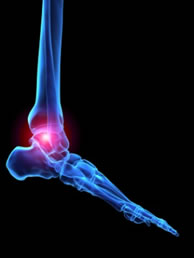 Rheumatoid arthritis is a condition that affects millions of people. It is described as a persistent pain, stiffness, and joint destruction that can lead to crippling deformities in the hands and feet. It is an autoimmune disease in which the body attacks the lining of its joints. Researchers have found a link between urinary tract infections and rheumatoid arthritis. They believe rheumatoid arthritis may be triggered by UTI’s similar to how strep throat may trigger rheumatoid fever.
Rheumatoid arthritis is a condition that affects millions of people. It is described as a persistent pain, stiffness, and joint destruction that can lead to crippling deformities in the hands and feet. It is an autoimmune disease in which the body attacks the lining of its joints. Researchers have found a link between urinary tract infections and rheumatoid arthritis. They believe rheumatoid arthritis may be triggered by UTI’s similar to how strep throat may trigger rheumatoid fever.
Because RA affects more than just your joints, including the joints in your feet and ankles, it is important to seek early diagnosis from your podiatrist if you feel like the pain in your feet might be caused by RA. For more information, consult with one of our podiatrists from Livingston Footcare. Our doctorswill treat your foot and ankle needs.
What Is Rheumatoid Arthritis?
Rheumatoid Arthritis (RA) is an autoimmune disorder in which the body’s own immune system attacks the membranes surrounding the joints. Inflammation of the lining and eventually the destruction of the joint’s cartilage and bone occur, causing severe pain and immobility.
Rheumatoid Arthritis of the Feet
Although RA usually attacks multiple bones and joints throughout the entire body, almost 90 percent of cases result in pain in the foot or ankle area.
Symptoms
- Swelling & pain in the feet
- Stiffness in the feet
- Pain on the ball or sole of feet
- Joint shift and deformation
Diagnosis
Quick diagnosis of RA in the feet is important so that the podiatrist can treat the area effectively. Your doctor will ask you about your medical history, occupation, and lifestyle to determine the origin of the condition. Rheumatoid Factor tests help to determine if someone is affected by the disease.
If you have any questions please feel free to contact our office located in North Brunswick, NJ. We offer the newest diagnostic and treatment technologies for all your foot and ankle needs.
Although rheumatoid arthritis attacks multiple bones and joints throughout the entire body, ninety percent of people who actually develop this condition usually do so in the foot or ankle area. Those who develop this kind of arthritis in the feet usually develop symptoms around the toes and forefeet first, before anywhere else. Rheumatoid arthritis appears to have a genetic component. If it runs in the family, then you will be more likely to develop it as well.
Rheumatoid arthritis is an autoimmune disorder in which the body’s own immune system attacks the lining of the membranes surrounding the joints. This causes inflammation of the membrane lining, and the gradual destruction of the joint’s cartilage and even bone.
Some of the most common symptoms that are associated with RA include pain and swelling of the feet. Stiffness in the feet is also another common symptom that people experience. Those who have RA in the feet usually feel the pain in the ball or sole of their feet. This can get to be very painful at times. A person's joints can even shift and become deformed after a period of time.
In order to properly diagnose RA in the feet it is usually necessary for a doctor or podiatrist to evaluate the area. Your doctor will also question you about your medical history, occupation, etc., to determine whether anything in your lifestyle may have triggered the condition. There are a number of tests that may be performed to help diagnose RA, such as a rheumatoid factor test. There is, however, no one single test that will tell you for sure if you have RA. There are different X-rays that can be taken as well to determine if a person has RA in their feet.
There is a range of treatment options for rheumatoid arthritis. Treatment of RA is usually a lifelong process that includes a variety of methods of treatment and therapy. Your doctor can prescribe special shoes that should help with arch support as well as heel support. A physical therapist can help those with this condition learn exercises which will keep their joints flexible. Surgery may be needed to correct some of the issues with the feet, such as bunions, and hammertoes. Fusion is usually the most successful surgical option for rheumatoid arthritis. However, people need to keep in mind that there are some risks associated with these surgeries.
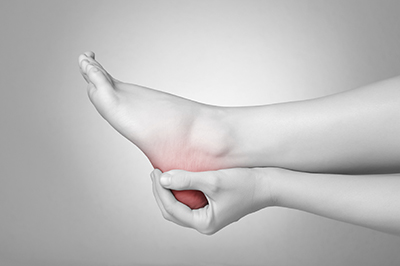 Plantar fasciitis is a painful condition that is described as a stabbing heel pain. The pain is usually at its worst in the morning, or after periods of inactivity. In order to avoid having heel pain in the future, you should change your shoes often. It isn’t healthy for your feet to wear the same shoes every day, especially if they are uncomfortable. You should also stretch and strengthen your feet muscles daily. It is also best to walk barefoot as often as you can.
Plantar fasciitis is a painful condition that is described as a stabbing heel pain. The pain is usually at its worst in the morning, or after periods of inactivity. In order to avoid having heel pain in the future, you should change your shoes often. It isn’t healthy for your feet to wear the same shoes every day, especially if they are uncomfortable. You should also stretch and strengthen your feet muscles daily. It is also best to walk barefoot as often as you can.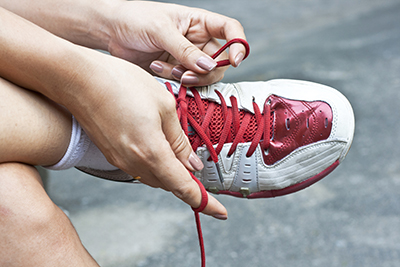 You should always make sure your shoes fit properly in order to avoid foot conditions such as plantar fasciitis. If your workout shoes are worn out, it is important to replace them. The shoes you wear should be appropriate for your gait and foot strike.
You should always make sure your shoes fit properly in order to avoid foot conditions such as plantar fasciitis. If your workout shoes are worn out, it is important to replace them. The shoes you wear should be appropriate for your gait and foot strike.  Swollen feet are a common issue that pregnant women have to deal with. It is advised that pregnant women drink six to eight glasses of water per day to stay hydrated. Pregnant women should also avoid standing up for long periods of time because this can cause fluids to be absorbed by lower parts of the body, which results in swelling. Another way to prevent swollen feet is to lower salt consumption. Salt causes the body to retain water, which causes swelling. Lastly, pregnant women should not wear tight jeans or pants because these items of clothing increase the amount of pressure on the feet.
Swollen feet are a common issue that pregnant women have to deal with. It is advised that pregnant women drink six to eight glasses of water per day to stay hydrated. Pregnant women should also avoid standing up for long periods of time because this can cause fluids to be absorbed by lower parts of the body, which results in swelling. Another way to prevent swollen feet is to lower salt consumption. Salt causes the body to retain water, which causes swelling. Lastly, pregnant women should not wear tight jeans or pants because these items of clothing increase the amount of pressure on the feet.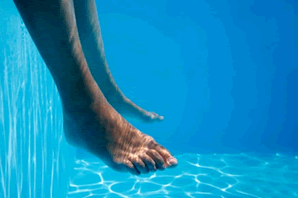 Osteoarthritis is a condition that affects the knees, hips, and feet of over 27 million Americans. In this type of arthritis, cartilage loss causes bones to rub against each other. Osteoarthritis produces a slow pain that increases over time. Activities such as swimming and yoga, with the approval of your doctor, can help relieve the pain for those with this condition.
Osteoarthritis is a condition that affects the knees, hips, and feet of over 27 million Americans. In this type of arthritis, cartilage loss causes bones to rub against each other. Osteoarthritis produces a slow pain that increases over time. Activities such as swimming and yoga, with the approval of your doctor, can help relieve the pain for those with this condition.
Swimming is a great way to exercise the feet. If you have any questions regarding the benefits of swimming on the feet, see one of our podiatrists from Livingston Footcare.Our doctorswill treat your heel pain symptoms in addition to other podiatric-related needs.
Benefits of Swimming and Foot care
Our feet receive the most stress on a daily basis. Walking, running, and long standing contribute to pain and stress on the feet. Swimming helps promote circulation and keep the body feeling great and healthy.
Benefits of swimming:
Improve blood circulation
· Swimming is a good, safe way to get in extra physical activity and improve circulation, without causing further trauma to the feet
Relieve aches or pains
· It takes all the pressure off of them, allowing the feet to relax and recover, and improves blood flow to them.
Circulation overall for diabetics
· Swimming contributes to blood flow, and increase oxygen levels within the body.
Reduce foot inflammation
· Swimming in warm water can increase blood flow and make it easier to move and stretch the afflicted foot. The feet are also exposed in water, giving them much needed air.
Swimming the helpful alternative:
Many people like the elderly and diabetics suffer from weakened muscles and joints. A water sport like swimming will support the body, thus allowing him or her to move freely. Blood flow circulation is a main trigger to tired inflamed feet.
If you have any questions, please feel free to contact our office located in North Brunswick, NJ. We offer the newest diagnostic and treatment technologies for all your foot care needs.
If our feet could talk, they would complain about all the walking, running and standing we constantly put them through. Our feet deserve a break from the stress we put on them, and swimming is a great way to do just that. This activity takes all the weight off of our feet, allowing them to relax. There are also many other reasons why swimming helps take care of our feet as well.
Swimming is great for foot health because it improves blood circulation to all the lower extremities. This is especially true for older people or those with injuries, who often cannot exercise as much due to weakened muscles or joints. Water supports much of the weight of the swimmer, relieving aches and allowing him or her to move freely. This gets the blood flowing to the rest of the body, including the feet.
Improving blood flow is also essential for those with diabetes, who usually have problems with circulation in their feet. Additionally, because of various foot complications, it is often difficult for these people to exercise. Swimming is a good, safe way to get in extra physical activity. It also improves circulation without causing further trauma to the feet.
For those that have foot problems due to overuse, swimming can be very beneficial. Athletes and people who are constantly on their feet frequently suffer from injuries like foot tendinitis or ankle sprains. Swimming in cold water can reduce foot inflammation, while swimming in warm water can increase blood flow and make it easier to move and stretch the afflicted foot. Furthermore, because the feet are usually covered during high activity, they tend to sweat a lot. This can cause complications like athlete's foot. Swimming allows the feet to be open to the air and gives them a chance to be cleaned as someone moves around in the water.
Pregnant women who suffer from edema and swelling can benefit from swimming. Swimming allows them to get off their feet for a while. Due to the buoyancy of the human body, they may comfortably float and move around. While swimming, they aren’t exerting uncomfortable and painful pressure on swollen feet and legs. This also lets them to relax sore muscles and joints.
Swimming is, in general, one of the best ways to exercise while protecting and caring for your feet. It takes all the pressure off of them, allowing the feet to relax and recover. Swimming also improves blood flow to them. It also makes it easier for someone to stretch and ease an injured foot, which helps heal it and reduces recovery time. If someone has any foot issues at all, or if they simply want to let their feet relax for a while, they should just go swimming.
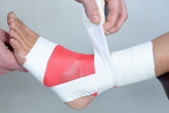 Trevor Daley of the Pittsburgh Penguins sustained a broken ankle injury after colliding with Ryan Callahan of Tampa Bay in Game 4 in May. Daley will be out for the rest of the playoffs as he is recovering, and defenseman Olli Maatta replaced Daley.
Trevor Daley of the Pittsburgh Penguins sustained a broken ankle injury after colliding with Ryan Callahan of Tampa Bay in Game 4 in May. Daley will be out for the rest of the playoffs as he is recovering, and defenseman Olli Maatta replaced Daley.
Broken ankles need immediate treatment. If you are seeking treatment, contact one of our podiatrists from Livingston Footcare. Our doctors can provide the care you need to keep you pain-free and on your feet.
Broken Ankles
A broken ankle is experienced when a person fractures their tibia or fibula in the lower leg and ankle area. Both of these bones are attached at the bottom of the leg and combine to form what we know to be our ankle.
When a physician is referring to a break of the ankle, he or she is usually referring to a break in the area where the tibia and fibula are joined to create our ankle joint. Ankles are more prone to fractures because the ankle is an area that suffers a lot of pressure and stress. There are some obvious signs when a person experiences a fractured ankle, and the following symptoms may be present.
Symptoms of a Fractured Ankle
● Excessive pain when the area is touched or when any pressure is placed on the ankle
● Swelling around the area
● Bruising of the area
● Area appears to be deformed
If you suspect an ankle fracture, it is recommended to seek treatment as soon as possible. The sooner you have your podiatrist diagnose the fracture, the quicker you’ll be on the way towards recovery.
If you have any questions feel free to contact our office located in North Brunswick, NJ. We offer the newest diagnostic tools and technologies to fit your foot and ankle needs.
Broken ankles are a serious injury that can lead to an inability to walk, function, and also cause a significant amount of pain. A broken ankle is a break in one of the three bones in your body that connect at the ankle joint, the tibia, the fibula, and the talus. The tibia and fibula are your two primary leg bones that connect at the knee, which sit directly upon the talus bone. This is protected by a fibrous membrane that allows for movement in our ankle joint. A broken ankle is usually caused by the foot rolling under or twisting too far, causing one of these three bones to snap.
A broken ankle is different from an ankle sprain, which occurs when the ligaments are ripped or torn but no bones have been broken. A sprain can still be very severe, causing bruising in the foot and an inability to hold your own weight, much like a broken ankle would. If you’re unable to stand, and suspect that you have a broken ankle, the first thing to do would be to get an immediate x-ray to determine the severity of the break.
A common cause of broken anklesis when the ankle is rolled over with enough pressure to break the bones. This usually happens during exercise, sports, or other physical activity. Another common cause is a fall or jump from a tall height.
One immediate treatment for pain reliefis elevating the feet above your head to reduce blood flow to the injured area. You can also apply ice packs to your ankles to help reduce swelling, redness, inflammation, and pain. After these initial steps, getting a cast and staying off your feet as much as possible will aid in the recovery of the broken ankle.The less movement and stress the ankle has to endure, the more complete it will heal.A doctor can determine if surgery is needed in order to heal correctly. In these cases, an operation may be the only option to ensure the ability to walk properly again, followed by physical therapy and rehabilitation.
It is highly important to determine if surgery is needed early on, because a broken ankle can become much more severe than you realize. If not professionally treated, the broken ankle will inhibit your walking, daily functioning, and produce a large amount of pain. Treating your broken ankle early on will help prevent further damage to it.